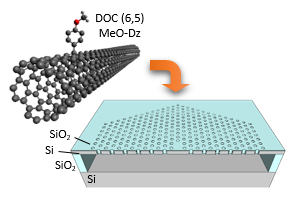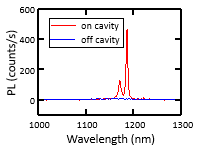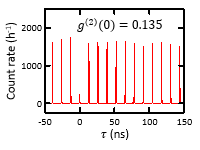Research:Enhanced single photon emission using silicon microcavities
Single-walled carbon nanotubes (SWCNTs) are a promising material as quantum light sources at room temperature and as nanoscale light sources for integrated photonic circuits on silicon. Room-temperature single-photon generation using SWCNTs has been accomplished by two approaches. The first is where efficient exciton-exciton annihilation process is used to reduce the number of mobile excitons to unity, and the second is where exciton trapping sites are created to localize excitons. The approach using exciton trapping sites allows for high-purity single-photon generation, the use of chirality-sorted SWCNTs, and the direct deposition on various types of substrates. Further development is expected by integrating single photon emitters into silicon photonics because it can lead to on-chip integrated quantum devices, and SWCNTs have a potential for such an application due to their emission wavelengths having low transmission losses in silicon.

Here we demonstrate integration of SWCNT dopant states with silicon microcavities. Emission from aryl sp3 defect states in SWCNTs coupled to two-dimensional photonic crystal microcavities is characterized by PL microscopy, and we obtain PL enhancement by a factor of ~50. Using time-resolved PL measurements on the same device, we observe ~30% decrease of emission lifetime, which is a direct evidence of enhanced emission decay rates by the Purcell effect.



The statistics of photons emitted from the cavity-coupled dopant states are investigated by photon-correlation measurements, and high-purity single photon generation is observed. The excitation power dependence of photon emission statistics shows that the degree of photon antibunching can be kept high even when the excitation power increases, while the single-photon emission rate can be increased to ~1.7 × 107 Hz, which corresponds to a single-photon emission efficiency of ~22% per laser pulse.
To learn more about this work, please refer to:
Enhanced single photon emission from carbon nanotube dopant states coupled to silicon microcavities
Nano Lett.
18, 3873 (2018).
![]()
RIKEN Research Highlight:
"Carbon nanotubes on holey silicon make bright source of single photons"
(Included in
RIKEN Research, Winter 2018
![]() )
)